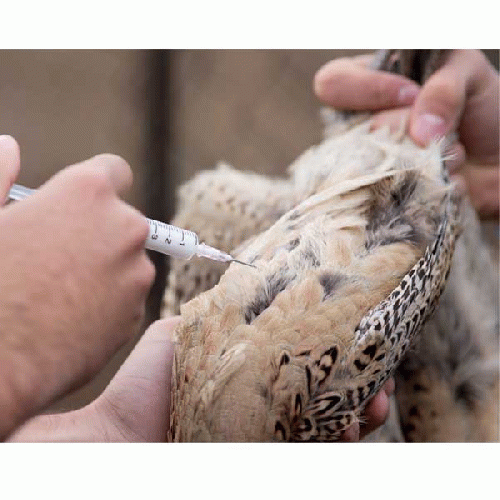Meat and poultry producers love antibiotics because animals gain weight on less feed and they can make more money. But in addition to enabling filthy farm conditions, antibiotics used in livestock allow bacteria to mutate and become "superbugs" which no longer succumb to antibiotics.
"Each year in the United States, at least 2 million people become infected with bacteria that are resistant to antibiotics and at least 23,000 people die each year as a direct result of these infections," says the CDC. "Many more people die from other conditions that were complicated by an antibiotic-resistant infection."
One farm favorite are fluoroquinolone antibiotics--a best selling but controversial drug class. In 2013, the FDA admitted under pressure from public health officials and patients groups that the "serious side effect of peripheral neuropathy" (nerve damage) can "occur soon after these drugs are taken and may be permanent." Hundreds of lawsuits had charged that warnings falsely claimed that the side effects were "rare" and that symptoms go away on discontinuation. In fact they are often permanent charge patients and patient groups who are raising awareness, coining the term "Fluoroquinolone Toxicity Syndrome."
After a decade-long battle with Bayer whose fluoroquinolone Baytril (enrofloxacin) was routinely used in poultry, the government managed to ban the antibiotic's use in poultry water. But fluoroquinolones----including Baytril--are still clearly in use on U.S. farms, behind the public's back.
But fluoroquinolones are still clearly in use on U.S. farms. The USDA's National Residue Program for Meat, Poultry, and Egg Products which tests for six fluoroquinolones found enrofloxacin (Baytril) and ciprofloxacin (Cipro) residues in meat in 2014, 2013 and 2012.
Also found by the USDA were residues of danofloxacin, an antibiotic not even approved for humans. In fact, danofloxacin is so dangerous its label says "Animals intended for human consumption must not be slaughtered within 4 days from the last treatment. Do not use in cattle intended for dairy production. A withdrawal period has not been established for this product in preruminating calves. Do not use in calves to be processed for veal." Residues are in our food and they can affect the nervous system, liver, muscles and skin of humans.
History shows that U.S. factory farmers turn nasty when the government tries to take away their antibiotics. Without antibiotics, animals would require more food and more room to move around, eating into profits. In 2008, the egg, chicken, turkey, milk, pork and cattle industries stormed Capitol Hill over the FDA's attempt to prohibit the use of antibiotics called cephalosporins and they won. A watered down, voluntary program of restriction followed because Big Ag is stronger than the government. In fact, the use of antibiotics on the farm has actually increased.
In 2013, an FDA guidance tried to reduce farm antibiotic use by having Pharma drop the approved indication or use of "growth production." But meat producers have simply switched the justification of routine antibiotic use, now terming it for "disease prevention," according to food safety activists.
In fact, a Reuters investigation in 2014, after the 2013 FDA guidance, found disturbing evidence. It determined that Tyson Foods, Pilgrim's Pride, Perdue Farms, George's and Koch Foods were using antibiotics "more pervasively than regulators realize." Pilgrim's Pride's feed mill records show the antibiotics bacitracin and monensin are added "to every ration fed to a flock grown early this year." (Pilgrim's Pride threatened legal action against Reuters for its finding.) Also caught red-handed using antibiotics despite denying their use on its website, KFC-supplier Koch Foods' chief financial officer Mark Kaminsky, said "I regret the wording."
As clean meat and meat substitutes crowd Big Meat on one side and tariffs threaten it on the other, the greedy use of dangerous antibiotics will only increase.
(Article changed on July 13, 2018 at 19:15)






